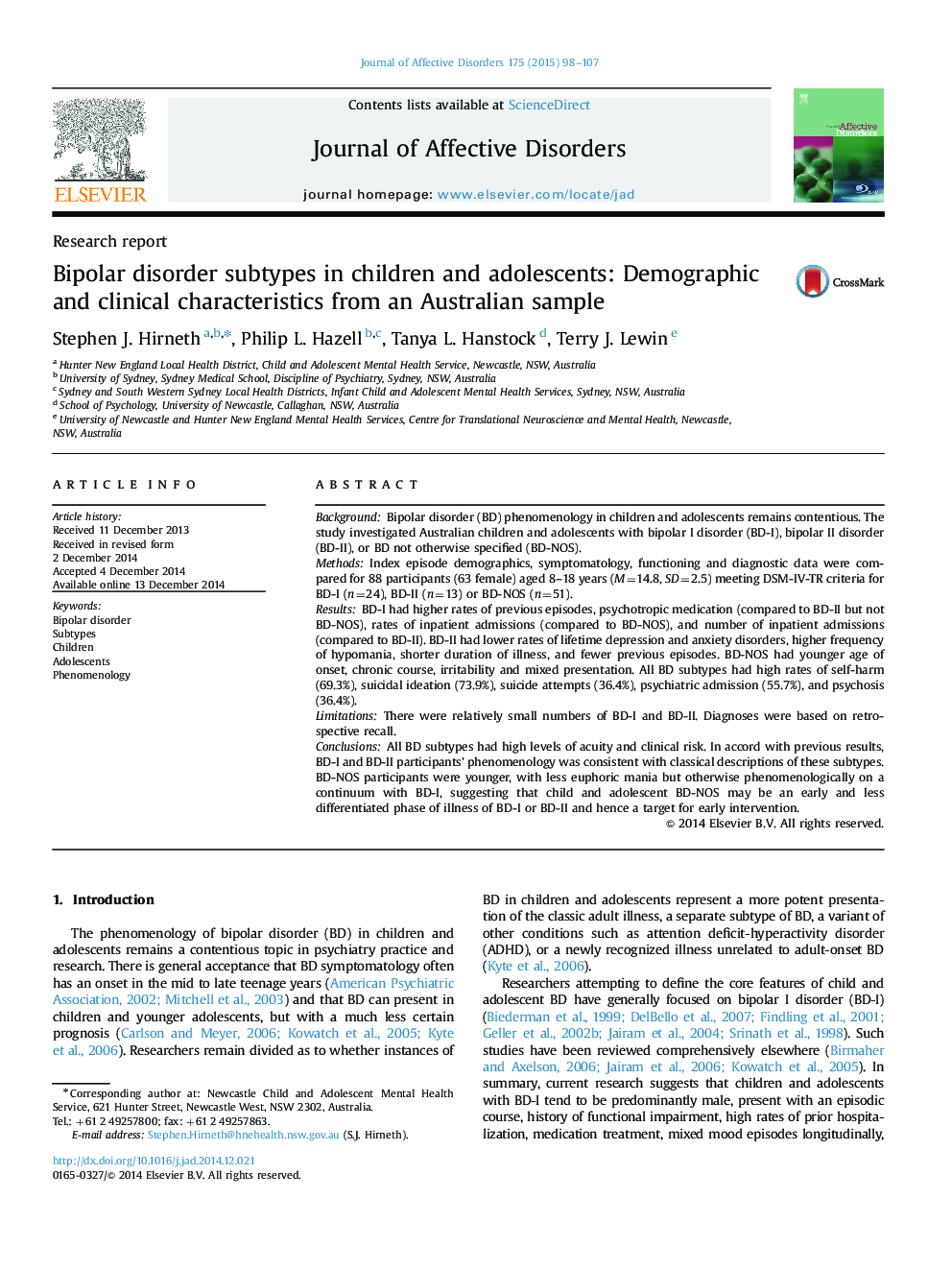| Article ID | Journal | Published Year | Pages | File Type |
|---|---|---|---|---|
| 6231920 | Journal of Affective Disorders | 2015 | 10 Pages |
BackgroundBipolar disorder (BD) phenomenology in children and adolescents remains contentious. The study investigated Australian children and adolescents with bipolar I disorder (BD-I), bipolar II disorder (BD-II), or BD not otherwise specified (BD-NOS).MethodsIndex episode demographics, symptomatology, functioning and diagnostic data were compared for 88 participants (63 female) aged 8-18 years (M=14.8, SD=2.5) meeting DSM-IV-TR criteria for BD-I (n=24), BD-II (n=13) or BD-NOS (n=51).ResultsBD-I had higher rates of previous episodes, psychotropic medication (compared to BD-II but not BD-NOS), rates of inpatient admissions (compared to BD-NOS), and number of inpatient admissions (compared to BD-II). BD-II had lower rates of lifetime depression and anxiety disorders, higher frequency of hypomania, shorter duration of illness, and fewer previous episodes. BD-NOS had younger age of onset, chronic course, irritability and mixed presentation. All BD subtypes had high rates of self-harm (69.3%), suicidal ideation (73.9%), suicide attempts (36.4%), psychiatric admission (55.7%), and psychosis (36.4%).LimitationsThere were relatively small numbers of BD-I and BD-II. Diagnoses were based on retrospective recall.ConclusionsAll BD subtypes had high levels of acuity and clinical risk. In accord with previous results, BD-I and BD-II participants' phenomenology was consistent with classical descriptions of these subtypes. BD-NOS participants were younger, with less euphoric mania but otherwise phenomenologically on a continuum with BD-I, suggesting that child and adolescent BD-NOS may be an early and less differentiated phase of illness of BD-I or BD-II and hence a target for early intervention.
